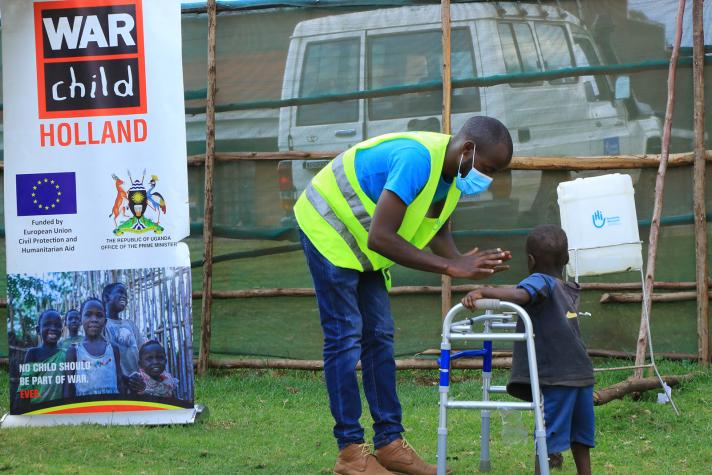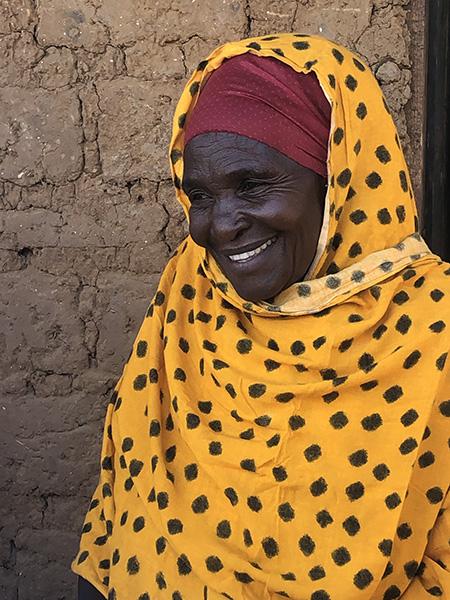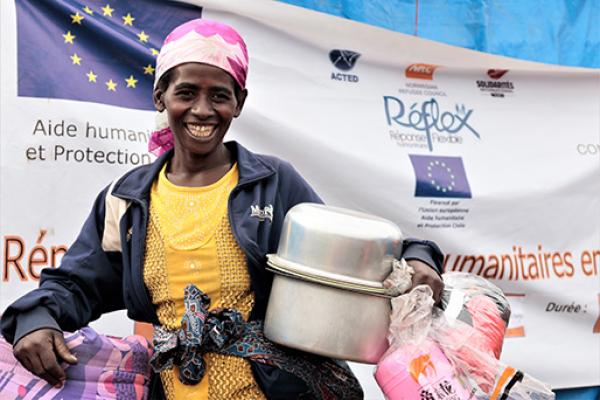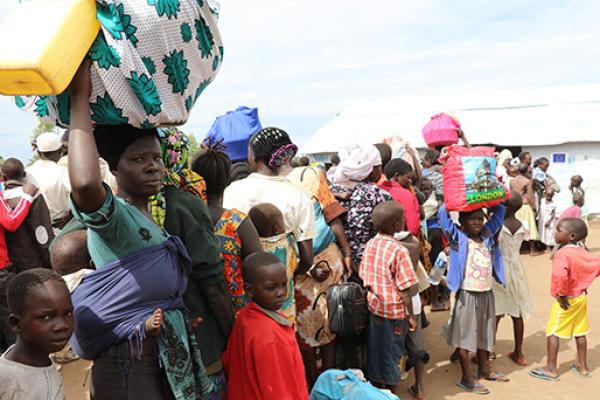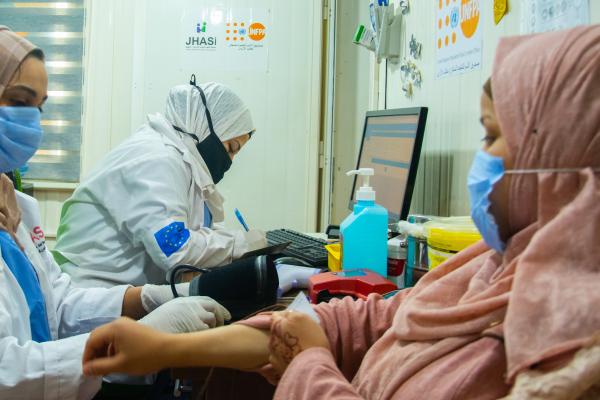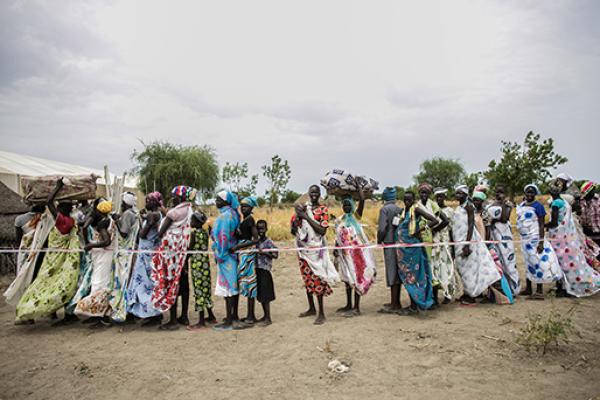A large white truck with “UN” emblazoned on the sides slowly pulls up. Dozens of men, women and small children quickly climb off the back, clutching small bundles of belongings. Some are also carrying mattresses and household items on their heads.
These are Congolese refugees fleeing a recent upsurge of violence in the eastern DRC and crossing into south-eastern Uganda. They are brought to the Nyakabande “Holding Centre” in the Ugandan town of Kisoro. Here, refugees are registered, given a preliminary health check and assigned a space in a shelter. Learn more about their journey.
Uganda has hosted some 1.3 million refugees from South Sudan and the Democratic Republic of the Congo (DRC) for over a decade. But the country experienced a sudden upsurge in the arrivals of refugees from the DRC in 2022.
Some 1.6 million people are internally displaced in the DRC. At the same time, over 60,000 of them, primarily women and children, have fled to Uganda, fleeing renewed violence between government forces and numerous rebel groups.
This has placed additional pressure on humanitarian agencies. Struggling with price increases in basic food commodities and fuel – caused by Russia’s war of aggression against Ukraine – agencies are also struggling to raise awareness of the Ugandan refugee crisis. This is a difficult task as attention is focused on the major refugee crisis facing Europe.
As one of the major donors, the EU has provided some €240 million in humanitarian assistance since 2017, with €30 million in 2022 alone allocated to Uganda.
“We use the budget to balance the various needs of the refugees”, explains Jordi Torres Miralles, technical expert of the EU’s Humanitarian Aid Operations in Kampala.
“We provide funding for educational projects, address gender-based violence, provide cash payments to refugee households to cover some of their basic food needs, and help aid partners provide basic services such as clean water and basic health.”
The arrival
The Nyakabande “Holding Centre”, designed to host up to 7,200 individuals for a few days, is currently providing shelter to over 17,000 people.
In theory, the new arrivals should be moved on to more permanent settlement sites such as Nakivale, some 250km east of Kisoro, where the refugees can build their own shelter and be provided with basic assistance. But many Congolese are reluctant to move away from the border, hoping they will soon be able to return home.

Newly arrived refugees in Nakivale receive their shelter kit.
© European Union, 2022 (photographer: Joseph Mary Buwule)
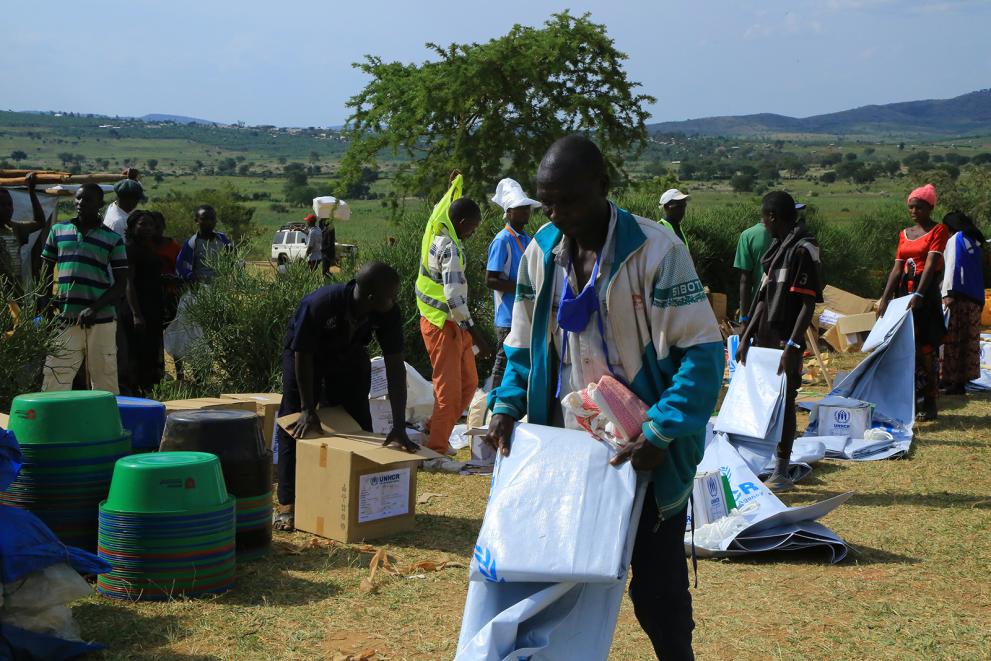
Refugees are given materials to build their own shelter.
© European Union, 2022 (photographer: Joseph Mary Buwule)

Temporary shelters are slowly transformed into permanent housing using local materials such as mud and straw.
© European Union, 2022 (photographer: Joseph Mary Buwule)
Bahati, his wife and 4 children are just one family that fled their village in the DRC’s North Kivu province overnight.
“Our village was attacked by rebels, we heard shooting and some neighbours were killed”, he recounts. “We just took whatever we could carry, everything else was left behind.”
After several days of walking through the bush, they managed to cross the border and were taken to Nyakabande. They are grateful for their assistance, especially for their second child, Marie, who is severely handicapped.
“For the first time, our girl is getting specialised care”, explains her mother. “They showed us special physical exercises we can do with her; she is now able to sit up and she interacts with us much better.”
Addressing the needs of the hundreds of children arriving from the war zone is an important aspect of the assistance provided. Save the Children, supported by EU Humanitarian Aid, bring children of different ages together in singing and dancing groups.
“We are trying to stimulate them in a group, so they interact normally with each other despite all their horrible experiences,” explains Barbara Nyamwiza. “It also helps us identify children who are not interacting because of what they experienced. We can then provide them with specialised care.”
A place that means safety
Nakivale hosts over 130,000 refugees and has basic facilities such as water supply, roads, schools and primary health care centres. New arrivals are given a small plot and basic material to construct their own shelters as they build more permanent homes from local materials such as mud and thatch.
Mwajuma, a 59-year-old grandmother, is the sole caretaker for her 4 grandchildren, having lost contact with the parents when they fled the fighting in the eastern DRC.
They have lived in Nakivale for over a year now. She struggles to look after the children and grow some vegetables on her small plot while dealing with chronic pain in one of her knees.
“With the help of my neighbours, I was able to build this small house with mud bricks and a thatch roof”, she explains. “I try to grow some vegetables, but I struggle with my knee and getting water is even more painful for me.”
But she is being treated for her knee, and her grandchildren attend school. “We get support from various organisations here, but food for the children is always a challenge, but at least we are safe here.”
In addition to food assistance, she has also received cash grants, with which she purchased some chickens and ducks that now provide nutrition and some additional income.
Some of Mwajuma’s neighbours have lived in the settlement for over 10 years. Some have set up small businesses. Numerous solid brick buildings have sprung up over the decades. There are shops, hairdressers, butchers, even banks, which help provide the cash grants managed by the World Food Programme.
These business opportunities exemplify positive interaction between the refugee communities and residents. While refugees burden local resources such as coal and water, aid agencies try to integrate local communities in all projects. The most recent example is a solar-powered borehole providing clean drinking water.
Thousands of residents no longer need to transport water from a nearby lake, saving local funds and creating new agricultural opportunities. The project demonstrates how humanitarian and development funding can support projects benefiting refugees and host communities while creating development opportunities.
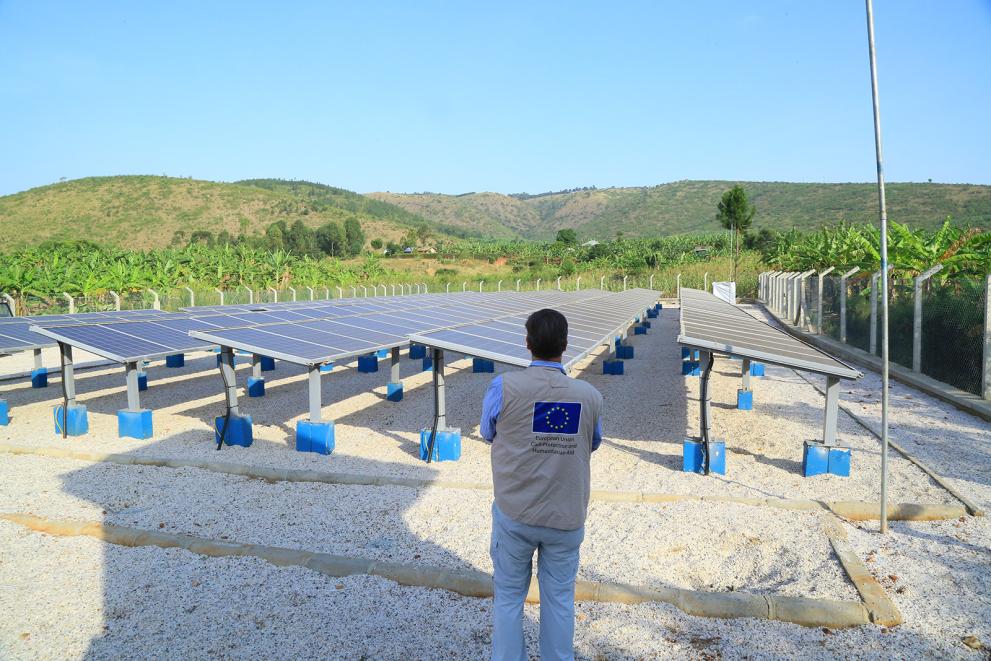
This solar-powered borehole provides clean drinking water to thousands of refugee households and host communities.
© European Union, 2022 (photographer: Joseph Mary Buwule)
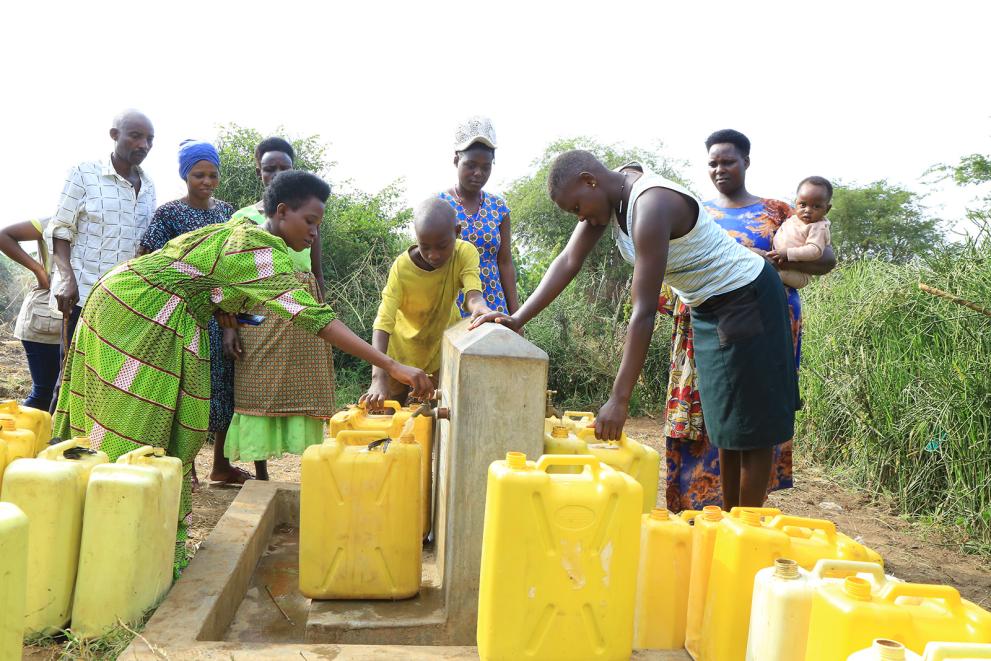
© European Union, 2022 (photographer: Joseph Mary Buwule)

Refugees and host communities no longer need to transport their drinking water from a nearby lake, thus saving local funds and creating agricultural opportunities.
© European Union, 2022 (photographer: Joseph Mary Buwule)
Currently, the major challenge for the humanitarian community is to ensure sufficient funding for the humanitarian crisis facing the displaced population of the DRC, both inside the country and in Uganda.
“We are facing a major challenge here in Uganda in providing humanitarian assistance, especially in the light of the other displacement crises in the world such as Ethiopia and Ukraine,” explains Bruno Rotival, head of the EU Humanitarian Aid office in Kampala.
“We need a coordinated international response so that we don’t become a forgotten crisis.”
Story by Mathias Eick, Regional Information Officer for East and Southern Africa, EU Civil Protection and Humanitarian Aid Operations.
Publication date: 14/09/2022



